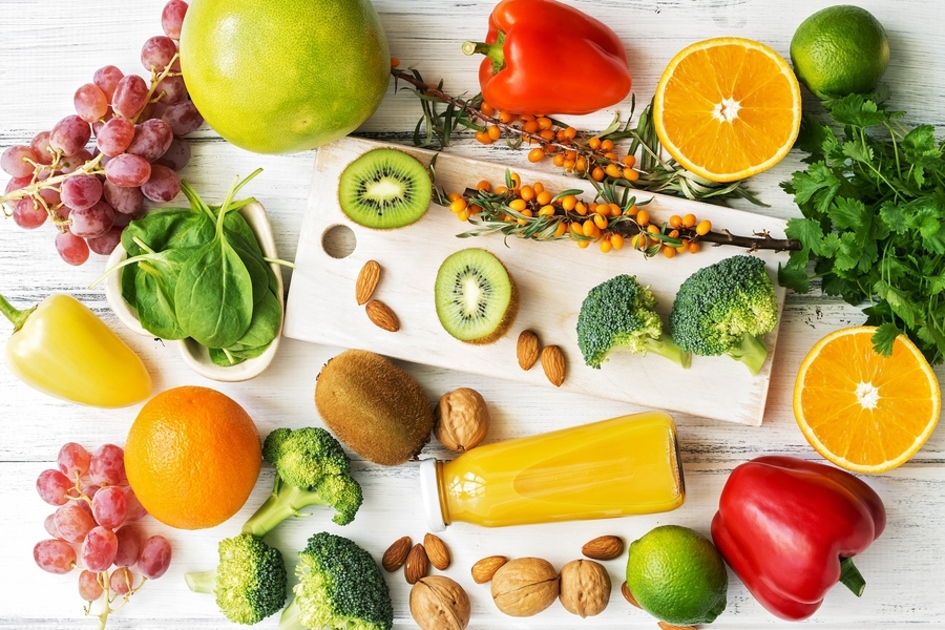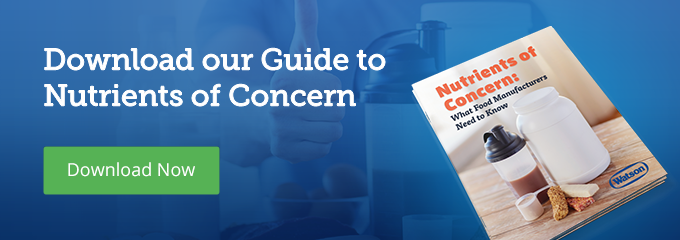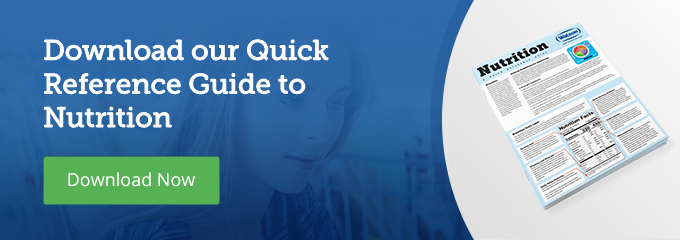Is Vitamin C An Underconsumed Nutrient
While food and beverage manufacturers are gearing up for the new nutrition label compliance deadlines, many still have questions about why these changes are even necessary. Here we discuss why the FDA has decided to change the labeling status of vitamin C from mandatory to voluntary—even though vitamin C has been identified as an underconsumed nutrient in America.
Vitamin C: An Essential Nutrient
Vitamin C (or L-ascorbic acid) is a water-soluble vitamin and antioxidant that plays several important roles in the body. It's also an essential nutrient, which means that it's required for normal body functioning but isn't synthesized by the body and so must be consumed through the diet.

Vitamin C is necessary to produce collagen—a protein found in skin, hair, bones, joints, and blood vessels. Vitamin C is also involved in immune system functioning, wound healing, and protecting cells from free radical damage. In addition, vitamin C improves iron absorption.
While deficiency symptoms are rare in Americans, vitamin C is often underconsumed, especially by at-risk groups such as smokers, those who eat a limited variety of foods, and infants who are fed only cow's milk. So why is vitamin C no longer required on the nutrition label?
Move Over Vitamin C
According to the Dietary Guidelines for Americans 2015-2020, the underconsumed nutrients for Americans are dietary fiber, vitamins A, C, D, and E, and the minerals potassium, magnesium, calcium, and choline.1Iron has been identified as an underconsumed nutrient for a particular segment of the population—adolescent girls and women ages 19 to 50 years.
Of these ten underconsumed nutrients, only five have been designated as nutrients of public health concern since low intakes are associated with health concerns. These are vitamin D, potassium, calcium, iron, and dietary fiber.

Based on this new information, the FDA is replacing the mandatory labeling of vitamins A and C on the nutrition label with vitamin D and potassium. Calcium and iron will remain mandatory label nutrients. The FDA believes that the new nutrition label will help Americans to make healthier food and beverage choices.
Check Your Label: A New DV for Vitamin C
Another change to vitamin C labeling brought about by new science is an updated Daily Value (DV). The DV for vitamin C has increased by 50%, from 60 mg to 90 mg. So for manufacturers that wish to continue including vitamin C on their nutrition label (as a voluntary nutrient), it's important to calculate the new % DV and see if it impacts any nutrient content claims.
For example, a product with 60 mg of vitamin C per serving labeled as 100% DV must be labeled as 70% DV (with rounding) under the new regulations. To claim 100% DV on the new nutrition label, manufacturers would need to boost their vitamin C content—either by adding or increasing vitamin C-rich ingredients or by fortifying with vitamin C through a custom nutrient premix.

Vitamin C Naturally Present in Foods
While most of us think of oranges when we think of vitamin C, some foods contain even more vitamin C, such as the red bell pepper. The National Institutes of Health reports the major contributors of vitamin C to the American diet as citrus fruits, tomatoes, tomato juice, and potatoes.2
Food sources that naturally contain vitamin C include:
- Peppers – such as red, yellow, and green bell peppers
- Citrus fruits – such as oranges, grapefruits, lemons, and limes
- Certain tropical fruits – such as kiwis, guavas, and papayas
- Cruciferous vegetables – such as broccoli, cauliflower, kale, and spinach
- Strawberries
- Potatoes
- Tomatoes
When to Fortify With Vitamin C
Boosting the content of vitamin C-rich ingredients can help maintain the % DV for products such as fruit smoothies and frozen veggie stir fry mixes that already contain these ingredients. However, for grain-based and protein-based products (like breakfast cereals, nutrition bars, and protein shakes) that don't contain vitamin C-rich ingredients, fortifying with vitamin C in the form of a custom nutrient premix is a common solution.
Vitamin C: A Voluntary Label Nutrient But Still Essential
Though vitamin C will no longer be required on the nutrition label, it's still an essential nutrient that's underconsumed by many Americans and a popular vitamin that Americans often look for on labels. Manufacturers can help meet consumers' needs by paying careful attention to their products' new % DVs and reformulating if necessary to provide the healthy, nutritious products that consumers are looking for.
To learn more about the essential nutrients, download our Quick Reference Guide to Nutrition

References
1. Dietary Guidelines for Americans 2015-2020, 8th Ed. (2015). Retrieved from https://health.gov/dietaryguidelines/2015/guidelines/
2. National Institutes of Health. (2018). Vitamin C: Fact Sheet for Health Professionals. Retrieved from https://ods.od.nih.gov/factsheets/VitaminC-HealthProfessional/
Is Vitamin C An Underconsumed Nutrient
Source: https://blog.watson-inc.com/nutri-knowledge/vitamin-c-label-nutrient
